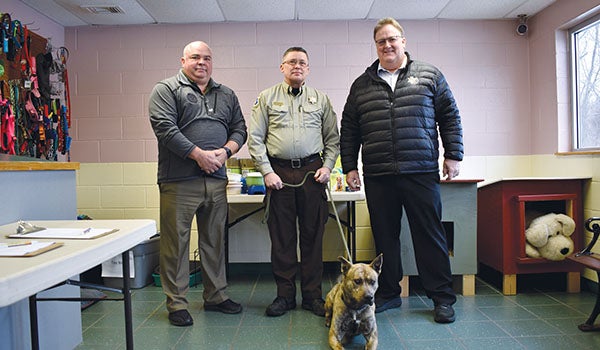Cass County Animal Control saved 96 percent of cats, dogs in 2020
Published 9:17 am Friday, January 8, 2021
|
Getting your Trinity Audio player ready...
|
CASSOPOLIS — Though 2020 was a challenging year for many, it left Cass County Animal Control a lot to celebrate, as it was able to save the lives of the majority of the animals that came into its care.
Last week, the Michigan Pet Fund Alliance announced that Michigan animal shelters collectively reached a 91 percent live release rate in 2019, according to its Live Release Report. Live release rates are calculated by dividing the total number of live outcomes, including adoptions, transfers and owner returns, by total outcomes, which includes total live outcomes plus euthanasia.
Cass County Animal Control was one of three Michigan shelters recognized by Deborah Schutt, MPFA founder and chairperson, for “tremendous improvements” to their live release rates. In 2019, Cass County Animal Control achieved an 86 percent live release rate, up from 38 percent four years prior.
Though the MPFA 2020 report will not be released until late this year, Cass County Animal Control Director Ron Butts confirmed that Cass County Animal Control’s live release rate increased even further in 2020. At the end of December, Cass County had recorded a cumulative 95.9 percent live release rate.
“The bar got set high in 2020,” Butts said. “It got set really high in our live release rate, and that’s a hard number to maintain. I told my staff, ‘now that we’ve reached those numbers, the hard part is going to be keeping those numbers up.’”
Both Butts and Cass County Sheriff Richard Behnke said multiple factors contributed to the increase in Cass County’s live release rate. One of the most significant is working with transfer partners, which allow animals to be transferred to a different shelter to give them a better chance of becoming adopted. Today, Cass County works with 20 transfer partners across multiple states.
“This gives some of our longer-term animals some different venues where they might have different resources,” Butts said. “It allows [transfer partners] to place those animals rather quickly.”
Other factors include a surge in adoptions over the course of the COVID-19 pandemic and support from the community. However, Behnke said the biggest factor is Butts and his team, who have worked diligently over the past four years to increase the county’s live release rate and save the lives of local animals.
“What led to this and where all the credit goes is to Ron [Butts],” Behnke said. “He and his staff have done a tremendous job.”
In 2021, Butts wants to continue to grow Cass County’s transfer network and continue programs, such as its spay and neuter program and vaccination clinics, in the hopes of saving and improving the lives of animals in Cass County.
To help meet that goal, Butts encouraged all residents always to consider adoption when deciding to bring a new furry friend into their homes.
“Consider adoption as your first choice,” he said.







